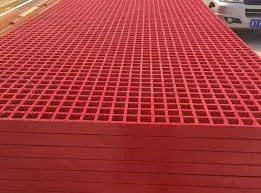
-
 Afrikaans
Afrikaans -
 Albanian
Albanian -
 Amharic
Amharic -
 Arabic
Arabic -
 Armenian
Armenian -
 Azerbaijani
Azerbaijani -
 Basque
Basque -
 Belarusian
Belarusian -
 Bengali
Bengali -
 Bosnian
Bosnian -
 Bulgarian
Bulgarian -
 Catalan
Catalan -
 Cebuano
Cebuano -
 China
China -
 China (Taiwan)
China (Taiwan) -
 Corsican
Corsican -
 Croatian
Croatian -
 Czech
Czech -
 Danish
Danish -
 Dutch
Dutch -
 English
English -
 Esperanto
Esperanto -
 Estonian
Estonian -
 Finnish
Finnish -
 French
French -
 Frisian
Frisian -
 Galician
Galician -
 Georgian
Georgian -
 German
German -
 Greek
Greek -
 Gujarati
Gujarati -
 Haitian Creole
Haitian Creole -
 hausa
hausa -
 hawaiian
hawaiian -
 Hebrew
Hebrew -
 Hindi
Hindi -
 Miao
Miao -
 Hungarian
Hungarian -
 Icelandic
Icelandic -
 igbo
igbo -
 Indonesian
Indonesian -
 irish
irish -
 Italian
Italian -
 Japanese
Japanese -
 Javanese
Javanese -
 Kannada
Kannada -
 kazakh
kazakh -
 Khmer
Khmer -
 Rwandese
Rwandese -
 Korean
Korean -
 Kurdish
Kurdish -
 Kyrgyz
Kyrgyz -
 Lao
Lao -
 Latin
Latin -
 Latvian
Latvian -
 Lithuanian
Lithuanian -
 Luxembourgish
Luxembourgish -
 Macedonian
Macedonian -
 Malgashi
Malgashi -
 Malay
Malay -
 Malayalam
Malayalam -
 Maltese
Maltese -
 Maori
Maori -
 Marathi
Marathi -
 Mongolian
Mongolian -
 Myanmar
Myanmar -
 Nepali
Nepali -
 Norwegian
Norwegian -
 Norwegian
Norwegian -
 Occitan
Occitan -
 Pashto
Pashto -
 Persian
Persian -
 Polish
Polish -
 Portuguese
Portuguese -
 Punjabi
Punjabi -
 Romanian
Romanian -
 Russian
Russian -
 Samoan
Samoan -
 Scottish Gaelic
Scottish Gaelic -
 Serbian
Serbian -
 Sesotho
Sesotho -
 Shona
Shona -
 Sindhi
Sindhi -
 Sinhala
Sinhala -
 Slovak
Slovak -
 Slovenian
Slovenian -
 Somali
Somali -
 Spanish
Spanish -
 Sundanese
Sundanese -
 Swahili
Swahili -
 Swedish
Swedish -
 Tagalog
Tagalog -
 Tajik
Tajik -
 Tamil
Tamil -
 Tatar
Tatar -
 Telugu
Telugu -
 Thai
Thai -
 Turkish
Turkish -
 Turkmen
Turkmen -
 Ukrainian
Ukrainian -
 Urdu
Urdu -
 Uighur
Uighur -
 Uzbek
Uzbek -
 Vietnamese
Vietnamese -
 Welsh
Welsh -
 Bantu
Bantu -
 Yiddish
Yiddish -
 Yoruba
Yoruba -
 Zulu
Zulu
Reliable FRP Transition Solutions for Optimal Performance
Understanding FRP Transition A Critical Shift in Modern Materials
Fiber Reinforced Polymer (FRP) composites have emerged as a revolutionary class of materials in various industries, particularly in construction, aerospace, and automotive sectors. The transition towards FRP technology marks a significant shift from traditional materials like steel and concrete towards advanced composites that promise enhanced performance, durability, and sustainability.
Understanding FRP Transition A Critical Shift in Modern Materials
One of the most notable transitions involving FRP is its application in civil engineering. In the past, infrastructures such as bridges and buildings relied heavily on conventional materials that often faced challenges related to longevity and maintenance. The introduction of FRP as an alternative has revolutionized this sector. For instance, FRP reinforcements can significantly extend the lifespan of concrete structures, reducing the frequency and cost of repairs while also offering resistance to environmental factors such as chemicals and moisture.
frp transition

Moreover, the use of FRP in retrofitting and strengthening existing structures has gained traction. Engineers can apply FRP materials to enhance the load-bearing capacity of aging buildings and bridges, effectively increasing their safety and usability without the need for extensive reconstruction. This transition not only preserves historical structures but also offers a sustainable solution to modern engineering challenges.
In the aerospace and automotive industries, the shift towards FRP is equally transformative. Lightweight yet strong, FRP components contribute to fuel efficiency and overall performance. For example, aircraft built with composite materials can achieve lower operational costs by consuming less fuel. Similarly, cars incorporating FRP materials benefit from improved fuel economy and handling due to reduced weight.
Despite the numerous advantages, the transition to FRP technology is not without challenges. The initial costs of FRP materials can be higher than traditional options, and the manufacturing processes often require specialized knowledge and equipment. Additionally, recycling and disposal of FRP composites remain a topic of ongoing research and development as industries work towards more sustainable practices.
In conclusion, the FRP transition represents a pivotal shift in material science, offering numerous benefits across various fields. As technology continues to evolve, we can expect further innovations in FRP composites, paving the way for more efficient, durable, and sustainable solutions that will redefine modern engineering practices. Embracing this transition is essential for industries looking to improve their performance while valuing environmental sustainability, marking a new era in material utilization.









